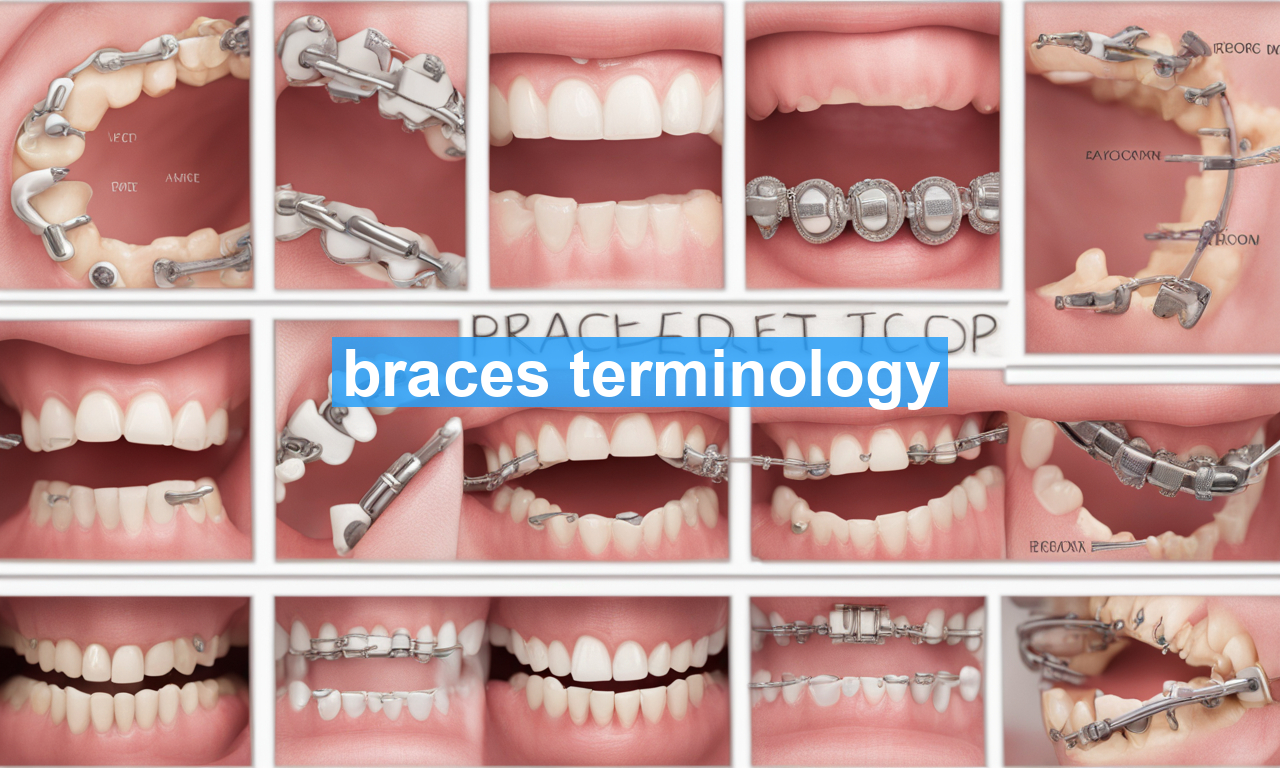Imagine waking up to a perfectly aligned smile — a dream for many, yet a reality carefully orchestrated through the artful science of orthodontics. The journey to that dream smile, however, is layered with terminology that may initially seem perplexing. From bands to brackets, this jargon forms the backbone of orthodontic care. This article unravels these terms, shedding light on their roles and significance in your pathway to a brighter smile. Understanding these concepts not only empowers you as a patient but also amplifies your engagement with your dental health care.
The Basics of Braces
Embarking on your orthodontic journey involves familiarizing yourself with some foundational terms. Did you know that the term “braces” broadly encompasses multiple components working in harmony? Here’s a straightforward breakdown:
Brackets: These are small squares bonded directly to the front of each tooth with a special adhesive. Made from stainless steel or a ceramic material, their principal role is to hold the archwire in place, forming a crucial connection between the wire and your teeth.
Archwire: This acts as the guiding force behind your braces. This thin metal wire runs through the brackets and exerts gentle pressure on the teeth, steering them into their desired positions. Depending on your treatment plan, archwires may be replaced or adjusted during your visits to the orthodontist.
Bands and Ligatures
Understanding the less visible components of braces helps make the journey less daunting:
Bands: Think of these as the anchor for your brackets. Made of stainless steel, they wrap around your teeth’s molars to provide a stable base for the rest of the orthodontic apparatus. While not every patient requires bands, they play a vital role when they are used.
Ligatures: These are tiny rubber or metal ties responsible for securing the archwire to the brackets. Often available in a variety of colors, ligatures can add a fun, personalized touch to the braces experience.
Specialized Equipment and Techniques
Engage deeper in the orthodontic dialogue by familiarizing yourself with a few specialized tools and methods:
Elastics (or rubber bands): A transformative component of many orthodontic treatments, elastics are used to adjust the position of the teeth and jaws. They are typically attached to hooks on the brackets and can correct a range of alignment issues.
Headgear: Though less common in contemporary treatments, headgear remains essential for some patients. Used primarily to slow jaw growth, this external apparatus gently exerts force on the teeth and jaw.
Palatal Expander: This device gradually widens the upper jaw to create more space for teeth alignment. The expander is custom-fitted and is adjusted incrementally to achieve the desired expansion.
Innovative Orthodontic Solutions
In recent years, advanced options like Invisalign have broadened the landscape of teeth alignment. These clear aligners offer a virtually invisible way to straighten teeth, presenting a compelling alternative to traditional braces for eligible candidates.
Demystifying Common Concerns
Orthodontic terminology often elicits questions from patients about care and maintenance. Here are answers to some frequently asked questions:
How Do I Manage Discomfort?
It’s typical to experience discomfort right after having braces fitted, or after tightening appointments. Over-the-counter pain relief and orthodontic wax often provide the necessary comfort. Learn more about how to alleviate discomfort from authoritative dental sources.
What About Oral Hygiene?
Maintaining impeccable oral hygiene is crucial during orthodontic treatment. Brushing after every meal, using an interdental brush or floss threader, and rinsing with a fluoride mouthwash ensures your teeth remain clean and healthy. Resources such as CDC Oral Health can offer additional tips on keeping your smile healthy.
The Importance of Regular Adjustments
Routine visits to the orthodontist are integral to the success of your treatment. During these appointments, your orthodontist will adjust the tension in the archwire, replace ligatures, and monitor the movement of your teeth. Adjustments are fundamental for a seamless progression towards achieving optimal alignment.
Physical Adjustments
The intricacy of braces lies in their need for periodic physical adjustments. By tightening the archwire or replacing worn-out components, these tweaks ensure constant pressure is applied to the teeth. Such regulated adjustments are central to the timing and effectiveness of treatment outcomes.
Acknowledging the Psychological Aspect
While braces are primarily concerned with physical alignment, the transformation also impacts self-confidence. Studies indicate that a straighter smile not only enhances aesthetics but also boosts self-esteem and social functionality. The psychological benefit, thus, cannot be overstated in orthodontics.
Looking Forward: Post-Braces Care
As your treatment concludes, it’s vital to shift focus to retainers, which play a significant role in sustaining your new smile. Retainers are custom-made appliances designed to maintain teeth in their new positions post-brace removal. Regular retainer use is essential to ensure that your teeth do not shift back to their original alignment.
Retainer Varieties
Retainers come in several types, including removable clear retainers and permanent retainers fixed behind the teeth. Your orthodontist will recommend the appropriate type based on your specific needs and lifestyle.
Conclusion
Navigating the world of braces terminology empowers you with the knowledge to make informed decisions and actively participate in your orthodontic care. While the terminology may initially appear daunting, recognizing and understanding these terms adds clarity and confidence to your journey. As you embark on this transformative path, remember that each term signifies a step closer to a healthier, more radiant smile.

